Measuring Chatbot and Live Chat Success
November 5, 2024
Uncategorized

Measuring Chatbot and Live Chat Success, Essential Key Performance Indicators for Your Business
Why Do Companies Need to Measure Chatbot and Live Chat Success?
Chatbots and live chat are powerful tools that enhance customer experience and increase engagement with the brand. To ensure these goals are met and sustained, it is essential for businesses to regularly measure the effectiveness of these tools. Here’s why measuring chatbot and live chat success is critical for any business:
1. Continuously Enhancing Customer Experience
- How does it help? Tracking key performance indicators (KPIs) like response time and accuracy for chatbots and live chat enables businesses to understand customer interactions and identify areas for improvement. A better customer experience drives satisfaction and loyalty to the brand.
2. Boosting Conversion Rates and Sales
- Why is it important? Data derived from analyzing customer interactions with chatbots and live chat provides insights into the customer journey and identifies key motivators for purchases. This information allows for optimizations that increase conversion rates and contribute to higher sales.
3. Improving Support Efficiency and Reducing Costs
- How does it save costs? By measuring chatbot and live chat success, companies can assess their ability to handle common inquiries and save time for human support teams. This minimizes operational costs, allowing staff to focus on complex cases, leading to higher efficiency.
4. Better Understanding of Customer Needs and Expectations
- Why does it matter? Analyzing chatbot and live chat data reveals frequently asked questions and common customer pain points. This enables companies to customize support and provide relevant content, enhancing customer satisfaction and engagement.
5. Optimizing Chatbot and Live Chat Performance through Continuous Improvement
- How does it work? Measuring KPIs provides valuable insights into chatbot performance, allowing businesses to make regular adjustments. For instance, if data shows the chatbot cannot handle certain queries, its programming can be refined to improve its response accuracy.
6. Achieving a Higher Return on Investment (ROI)
- Why should it be measured? By tracking chatbot and live chat success, companies can ensure these tools are delivering tangible benefits, such as increased customer satisfaction or improved retention rates.
7. Enhancing Marketing Strategy
- How does it contribute? Measuring chatbot and live chat success can offer valuable insights into customer preferences and behavior, helping to refine marketing strategies and tailor campaigns to resonate with target audiences.
Key Performance Indicators (KPIs) for Measuring Chatbot and Live Chat Success
Measuring KPIs for chatbots and live chat helps companies gauge the effectiveness of these tools in achieving objectives like improved customer experience and higher conversion rates. Here’s an in-depth look at the essential KPIs to focus on:
1. First Response Time (FRT)
- What is it? First response time is the amount of time it takes for the chatbot or live chat to respond to a customer after the conversation begins. This KPI is essential for measuring responsiveness, which is a crucial factor in customer satisfaction.
- Why is it important? Fast response time reflects efficiency and attentiveness, building customer confidence. The shorter the response time, the higher the likelihood of customer satisfaction and continued engagement.
- How to improve it: Enhancing FRT involves setting up immediate replies in the chatbot and training live chat teams on faster response techniques for a seamless customer experience.
2. Response Accuracy
- What does it measure? Response accuracy refers to how correct and relevant the responses are from the chatbot or live chat team to customer inquiries. This KPI relates to the quality of information provided and the tool’s ability to understand user queries.
- Why is it crucial? Accurate responses build customer trust in the chatbot, minimizing frustration. Incorrect or irrelevant answers can lead to a poor customer experience, increasing the risk of customer attrition.
- How to improve it: Enhancing response accuracy requires refining the chatbot’s knowledge base, integrating AI technologies to better understand conversation context, and training live chat teams on best response practices.
3. Conversation Completion Rate
- What is it? This rate measures the percentage of conversations that start and end with satisfactory answers to customer inquiries, without needing additional intervention.
- Why does it matter? A high conversation completion rate indicates that the chatbot or live chat can resolve issues fully, leading to fewer repeated inquiries and higher customer satisfaction.
- How to enhance it: Improving this metric involves training the chatbot to handle diverse scenarios and optimizing the user interface to ensure easy navigation through chat options.
4. Customer Satisfaction (CSAT)
- How is it measured? CSAT gauges customer satisfaction after engaging with the chatbot or live chat. This can be collected through quick surveys post-chat, asking about the level of satisfaction.
- Why is it essential? Customer satisfaction reflects the quality of service and the extent to which customer expectations are met. Higher satisfaction levels lead to an enhanced brand image and foster customer loyalty.
- How to boost CSAT: Improving CSAT requires a focus on response time, answer accuracy, and providing a smooth, user-friendly experience. Companies can also respond to feedback from customers for continuous improvement.
5. Successful Chat Rate
- What does it track? This KPI indicates the number of conversations completed successfully without errors or repeat attempts, where the customer query is fully addressed.
- Why is it significant? A high successful chat rate demonstrates the chatbot’s ability to engage effectively and sustainably, reducing the need for unnecessary escalations to human support.
- How to improve it: Enhancing this rate involves strengthening the chatbot’s understanding of common inquiries and expanding its database to cover all potential customer questions.
6. Conversion Rate
- What is it? Conversion rate measures the percentage of customers who take a desired action, such as making a purchase or subscribing, after interacting with the chatbot or live chat.
- Why is it important? Conversion rate links chatbot success to business goals, directly impacting revenue and return on investment.
- How to improve it: To enhance conversion rate, train the chatbot to guide customers effectively toward actions, like completing orders or informing them about special offers.
هل لديك اى استفسار؟
لا تتردد بالاتصال بنا نحن نعمل على مدار الساعة للاجابة عن استفسار لديك
- 920029985
- sales@arqaam.sa






